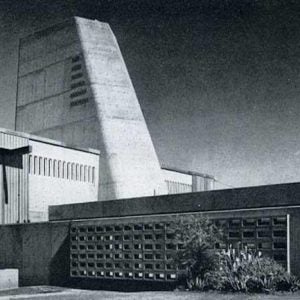 The International Atomic Energy Agency (IAEA) 14-member Support and Assistance Mission to Zaporizhzhia (ISAMZ) team of experts arrived at Ukraine's Zaporizhzhia NPP on the morning of 1 September after being delayed for several hours by shelling near the site. The IAEA said on Twitter that the team had arrived at the plant “to conduct indispensable nuclear safety and security and safeguards activities”. Reuters said its reporter saw the team arrive in a large convoy with a heavy presence of Russian soldiers nearby. Russia and Ukraine have accused each other of trying to sabotage the team’s visit to the NPP, which is controlled by Russian forces but operated by Ukrainian staff.
The International Atomic Energy Agency (IAEA) 14-member Support and Assistance Mission to Zaporizhzhia (ISAMZ) team of experts arrived at Ukraine's Zaporizhzhia NPP on the morning of 1 September after being delayed for several hours by shelling near the site. The IAEA said on Twitter that the team had arrived at the plant “to conduct indispensable nuclear safety and security and safeguards activities”. Reuters said its reporter saw the team arrive in a large convoy with a heavy presence of Russian soldiers nearby. Russia and Ukraine have accused each other of trying to sabotage the team’s visit to the NPP, which is controlled by Russian forces but operated by Ukrainian staff.
To reach the plant the team travelled from Kyiv to the town of Zaporizhzhia, which is 55km from the plant and remains under Ukrainian control, where they spent the night before leaving for the plant. The route took them through the frontline, which has seen intense shelling. Ukraine had insisted on this route although Moscow had urged them to travel through Russian territory, which would not have required any such risk. Russia's Foreign Minister Sergei Lavrov said Moscow was doing everything to ensure that the plant could operate safely, and for the IAEA inspectors to be able to complete their tasks.
IAEA Director General Rafael Mariano Grossi, who led the team, told reporters before leaving the city of Zaporizhzhia that he was aware of "increased military activity in the area" but would press ahead with the plan to visit the facility and meet staff. The IAEA inspectors, wearing body armour and travelling in white armoured land cruisers with UN markings on their sides, were held at the first check point outside the city following the shelling reports.
Moscow accused Ukrainian troops of trying to seize the NPP hours before the IAEA team was due to arrive. Russia's Defence Ministry said some 60 Ukrainian troops had crossed the Dnipro River – which divides territory held by the two sides – in boats at 6:00 am local time in an attempt to take over the plant, but had been repelled by Russian forces. Russia’s Foreign Ministry said that, in the event of further attempts by Kyiv to disrupt the work of the IAEA team with shelling or sabotage, the entire responsibility for the consequences would rest with Ukraine. For its part, Ukraine's nuclear utility Energoatom said shelling by Russia had forced the shutdown of one of only two operating reactors at the NPP site. Throughout the days leading up to the visit the plant operators town of Energodar had come under intense shelling.
The IAEA experts arrived at the power plant at about 13:00. The head of the Rosatom delegation, and employees of the NPP, accompanied the IAEA delegation during its tour of the plant territory. There were also some 50 journalists at the site, RT noted. According to the head of the Zaporizhzia region administration (pro Russian), Yevhen Balytsky, the inspections intended to stay at the NPP until 3 September, confirming what Grossi had told reporters the day before. Balytsky said they would get acquainted with the working hall of the plant, and then visit the reactors.
Later on 1 September, RIA Novosti and TASS reported that Grossi had left the plant after the team made its initial assessment of the conditions there. The rest of the team continued the inspection. Grossi told reporters that the IAEA delegation had gathered a lot of information – "the key things that I wanted to see, I saw," he was quoted as saying. He added that the IAEA intended to keep representatives at the NPP. “Representatives and experts of the IAEA remain at the Zaporizhzia plant. We have looked at quite a lot today, started the first assessment, and will analyse it further, but you should know that the IAEA experts remain at the station", TASS cited him as saying.
Image: IAEA inspectors arrive at the Zaporizhzia NPP (courtesy of Reuters)






